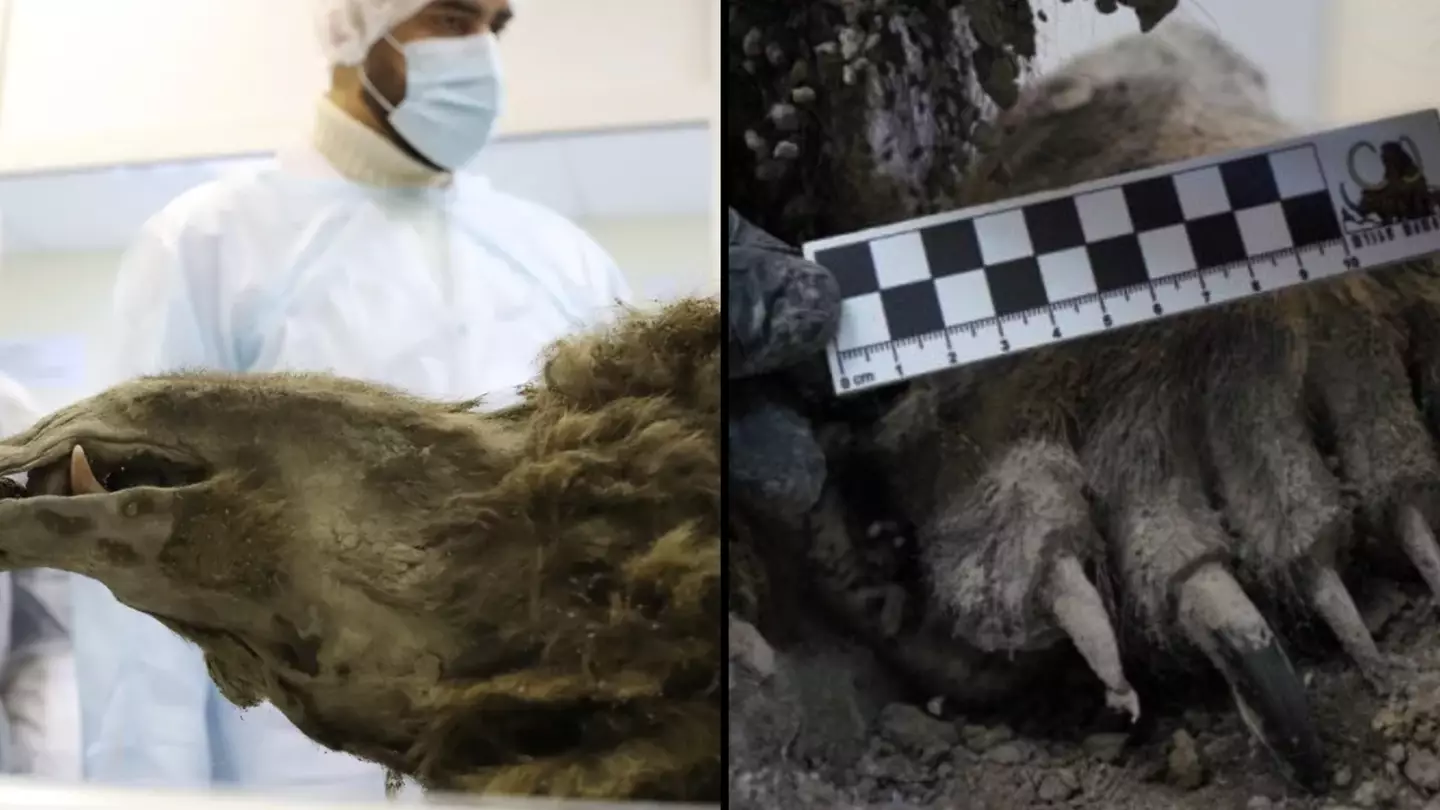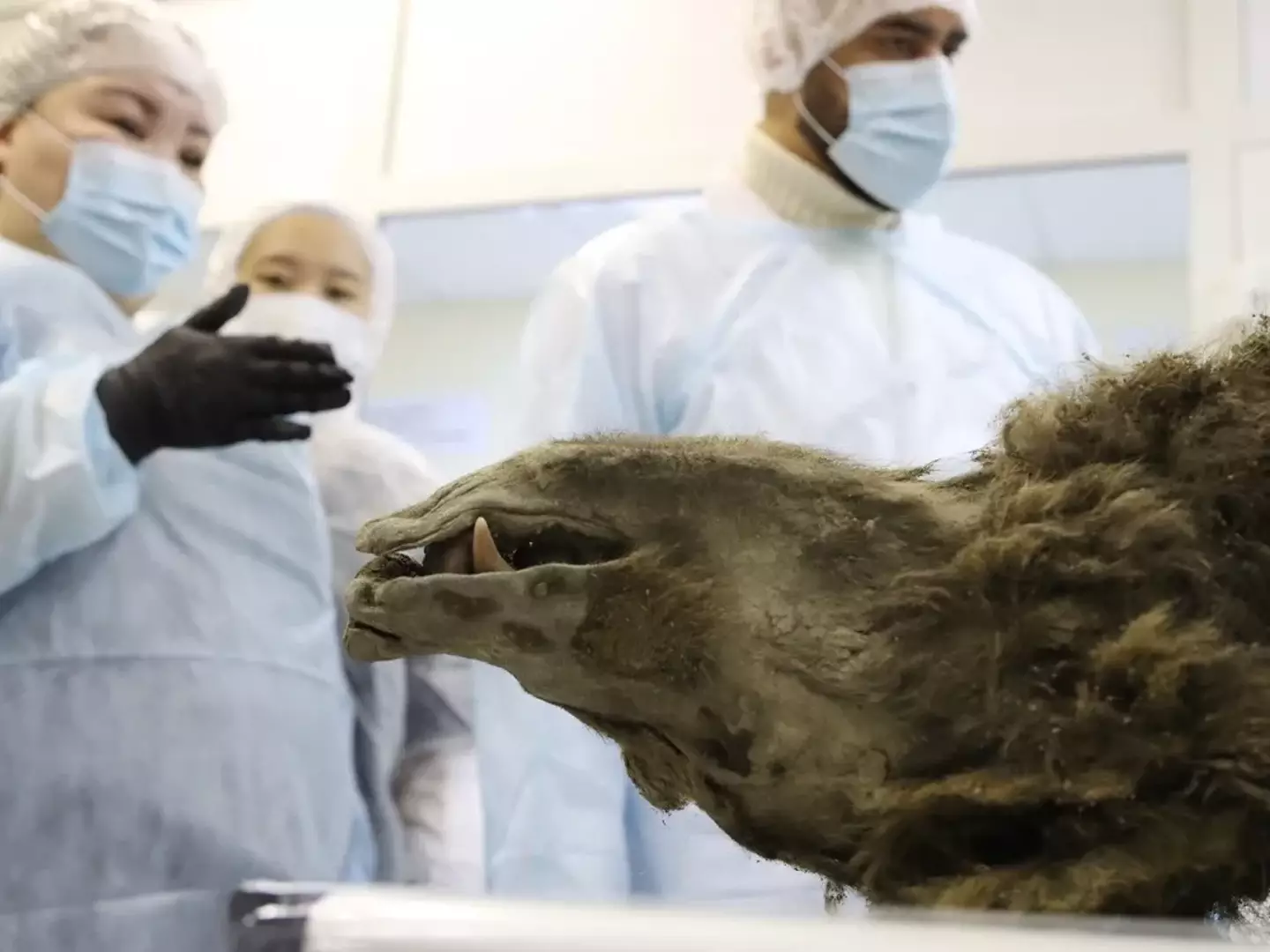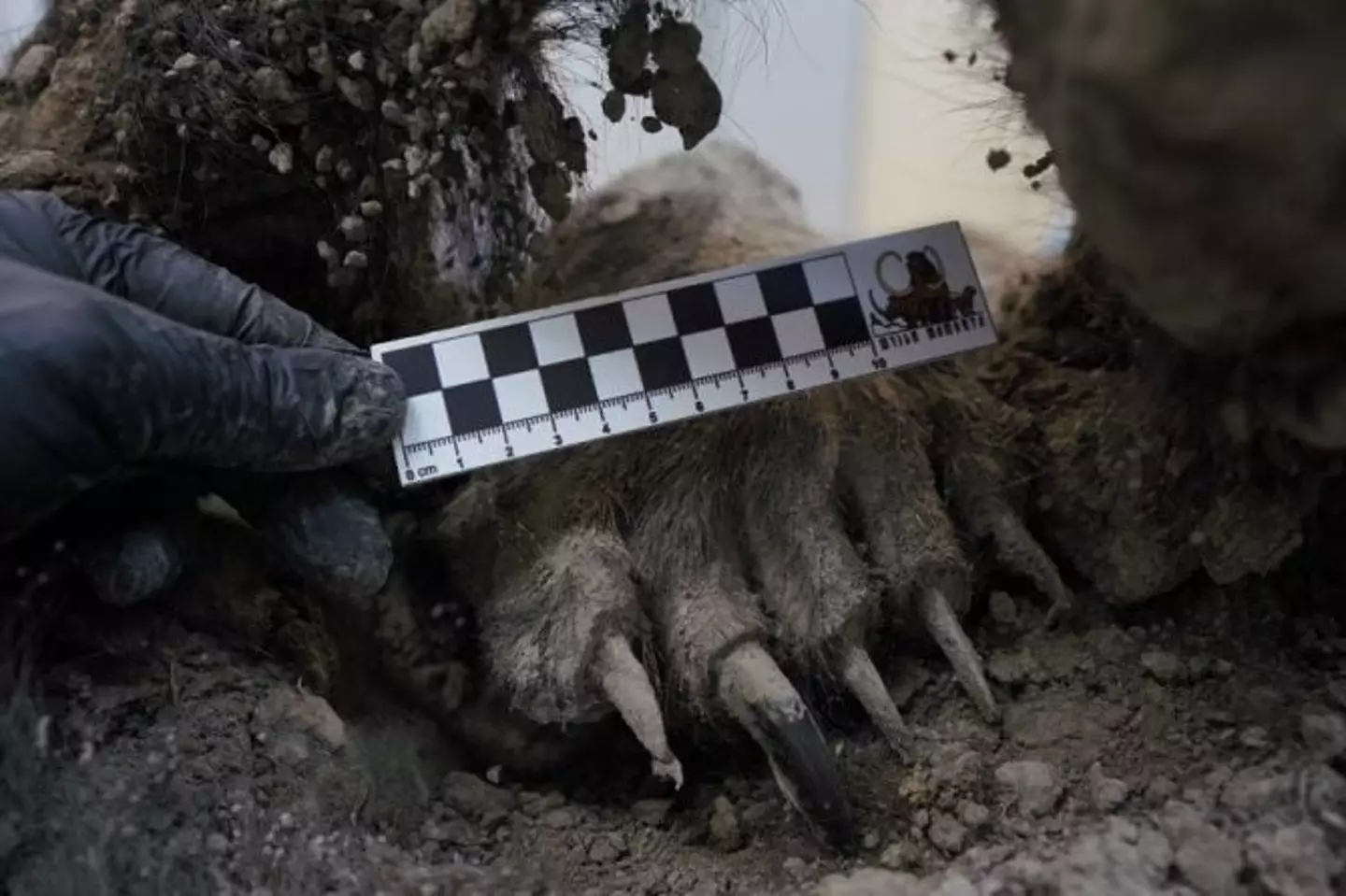
Scientists have been able to identify the last meal of a bear that is 3,500 years old.
The unfortunate ursine was found in Siberian permafrost, and was so well preserved that its stomach contents could still be analysed in enough detail to figure out its last meal.

Not only that, but more or less everything about the bear was intact, including its fur, teeth, skin, claws, and internal organs, after it was found by reindeer hunters on the island Bolshyoy Lyakhovsky, located to the north of Russia.
Advert
However, the bear was initially misidentified as an extinct species of cave bear from around 22,000 to 39,500 years ago. Even this far back would have made it contemporary to humans, but the bear was actually much younger, being a mere 3,460 years old instead.
Instead of being an extinct species, scientists investigating the bear have found that it is in fact a brown bear. But what makes it remarkable is just how well preserved the body of the bear actually is.
Palaeontologist Lena Grigorieva said in 2020: “This is the first and only find of its kind—a whole bear carcass with soft tissues.
“It is completely preserved, with all internal organs in place, including even its nose. Previously, only skulls and bones were found. This find is of great importance for the whole world.”
Despite not being an extinct species, the bear still offered some valuable insights into the past. Scientists were able to study bacteria and viruses in the tissue, as well as studying its cells and extracting its brain for further study.
Advert

Having defrosted a freezer with some very old food in it, I can only imagine what the smell must have been like as the bear began to thaw.
The permafrost had also preserved the bear's last meal, which researchers examined. In its stomach they found bird feathers as well as the remains of plants, which they couldn't identify.
What was not clear however was how the animal had managed to get to Bolshyoy Lyakhovsky from the mainland, as it is located some distance away.
It's plausible that the bear could have swam the distance as some bears are strong swimmers.
Advert
Alternatively, it's possible that when the bear was alive that the island was connected to the mainland by a bridge of ice which it was able to walk across.
Palaeontologists estimated that the bear was around two to three years old when it died. As for how, they weren't exactly sure, but did note some injuries to the animal's spine.
As rising global temperatures cause permafrosts to melt, who knows what other mysteries might be revealed from under the ice.
Topics: News, World News, Good News, Science
